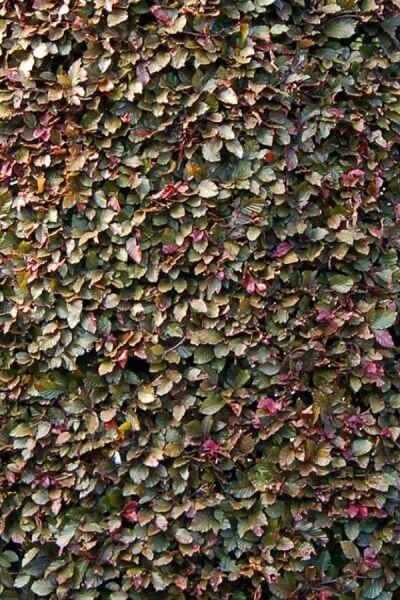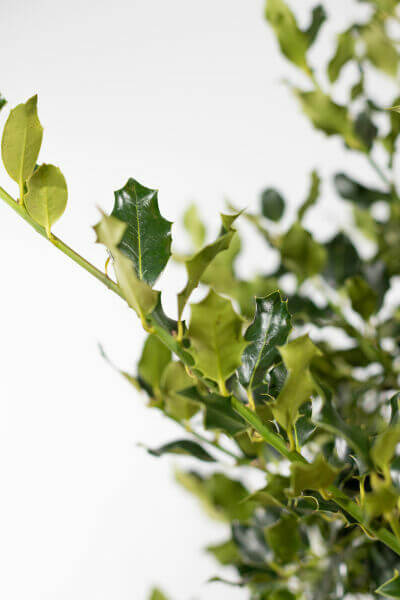Hedging Plants For Wildlife Friendly Gardens
Hedging Plants For Wildlife Friendly Gardens
Blog Article
Hedging Plants For Large Gardens
Boost your garden's allure with lush hedge varieties such as Yew (Taxus), Thuja, Laurel, Photinia, and Bamboo, commemorated for their structural integrity and environmental advantages.
Yew and Thuja provide evergreen protection and winter season durability, while Laurel uses rapid growth and broad, aromatic leaves.
Photinia adds seasonal appeal with its lively red foliage, and Bamboo lends a low-maintenance, peaceful atmosphere.
These hedges improve air quality, decrease sound, and create tranquil, private areas.
Correct planting, spacing, and maintenance guarantee energetic development and eco-friendly consistency.
Check out how these rich ranges can raise your garden's beauty and wellness.
Key Takeaways
Change Your Garden With Lush Hedge Ranges
- Select Yew for its dense, evergreen development and unequaled durability.
- Opt for Laurel for its quick development and broad leaves, ensuring quick personal privacy.
- Pick Photinia for its lively seasonal foliage, which turns a striking dark red.
- Utilize Bamboo for a low-maintenance, winter-hardy hedge with aesthetic appeal.
- Space plants 2-3 per meter and prune routinely for optimum growth and health.
Popular Hedge Plants
When transforming a garden with rich hedge ranges, it's necessary to consider popular hedge plants such as Yew, Thuja, Laurel, and Photinia due to their unique characteristics and benefits.
Yew (Taxus) is highly esteemed for its longevity and dense, green growth, making it a prime choice for enduring landscapes.
Thuja is noted for its evergreen foliage and robust winter season durability.
Photinia includes seasonal vibrancy with red leaves that darken gradually, producing vibrant visual appeal.
Laurel uses rapid growth and aromatic, broad leaves, perfect for fast personal privacy.
In Addition, Bamboo is an outstanding choice for ambiance, offering a low-maintenance, winter-hardy alternative that boosts the garden's visual with its elegant, swaying walking canes.
These choices accommodate a variety of horticultural needs and choices.
Benefits of Garden Hedges
Garden hedges offer a wide range of benefits, making them an important addition to any landscape. These natural barriers are cost-efficient to carry out and offer significant wind security, enhancing air blood circulation and contributing to sound decrease. The dense foliage of hedges like Thuja and Beech makes sure privacy by blocking exposure, developing a remote and serene environment.
Hedges likewise play an essential role in microclimate policy, offering a steady environment that cultivates plant development and lessens temperature fluctuations. Their elaborate leaf structures filter pollutants, improving air quality and contributing to a healthier garden environment.
Furthermore, hedges master sound reduction, taking in and deflecting sound waves to lower ambient sound levels. This double functionality of supplying both acoustic and visual personal privacy boosts the general harmony and aesthetic appeal of any garden.
Planting and Upkeep Tips
For a successful hedge, meticulous preparation of the planting area is vital. Guarantee the soil has correct pH and drainage to support strong root development.
Space the plants appropriately for the picked types. Water the hedge frequently throughout its preliminary development phase, adjusting as required with seasonal modifications.
Implement a systematic insect control and illness prevention strategy, using chemical or natural treatments when necessary. Frequently inspect for aphids, mites, and fungal infections.
Apply mulch to keep wetness and reduce weeds. Seasonal pruning promotes thick growth and air circulation, vital for plant health.
Following these standards will help you cultivate a dynamic, properly maintained hedge that boosts the appeal of your garden.
Spacing and Cutting Guidelines
Spacing and Trimming Guidelines
Proper spacing and trimming are essential for cultivating healthy, aesthetically appealing hedges. Sufficient spacing makes sure each plant receives adequate nutrients, light, and air flow.
Follow these standards for optimum hedge upkeep:
- Spacing: Position hedge plants 2-3 plants per meter to motivate robust development.
- Pruning Strategies: Regular pruning is vital for preserving preferred hedge height and shape. Cut brand-new development in summertime and cut back older wood during winter season.
- Seasonal Care: Change cutting schedules and approaches according to seasonal requirements to guarantee plant health.
- Hedge Height: Routinely screen and trim to maintain the wanted hedge height and attain uniform aesthetic appeals.
Adhering to these actions will guarantee your hedge grows, improving both the appeal and functionality of your garden.
Choosing the Right Hedge
Picking the Right Hedge
Choosing the appropriate hedge involves examining elements such as mature height, foliage density, and ecological durability. Effective hedge plant selection needs comprehending each types' development characteristics and site-specific adaptability.
For example, Yew (Taxus) uses outstanding longevity and thick development, while Thuja is noteworthy for its winter strength. Additionally, thinking about maintenance requirements is crucial; fast-growing types like Laurel or Privet demand routine cutting, whereas low-maintenance options like Bamboo or Ivy may be more suitable for those looking for minimal upkeep.
Ecological elements such as soil type, light availability, and wetness conditions should likewise guide the choice procedure. This careful technique guarantees the chosen hedges will prosper, providing both practical and aesthetic advantages to the garden landscape.
Shipment and Planting Recommendations
To ensure your hedge plants thrive, they must be provided by specialized couriers and planted immediately upon arrival.
Follow these essential actions for effective planting:
- Soil Preparation: Enrich the soil with raw material to enhance drainage and nutrient content.
- Planting Depth: Produce a trench two times the width and equivalent to the depth of the root ball.
- Watering Techniques: Water thoroughly after planting, keeping the soil consistently damp however not saturated.
- Mulching: Apply a layer of mulch to keep wetness and reduce weeds.
Consumer Support and Service
Provided the important function of prompt help in horticultural pursuits, our customer support team is available 6 days a week through telephone, email, and social networks to use expert recommendations and promptly resolve any issues. Their dedication to quick response times ensures customer complete satisfaction by fixing inquiries related to plant health, optimal planting techniques, and maintenance schedules.

-----------------
Within 48 hours
This comprehensive support group, strengthened by an excellent 9.3/ 10 consumer score, highlights our dedication to boosting the gardening experience for every single client.
Frequently Asked Questions
How Long Does It Take for Hedge Plants to Establish?
Hedge plants typically need one to three years to end up being totally developed, with the specific duration varying by species and growing conditions.
Efficient care during this crucial period is important for robust growth. Consistent watering, vigilant weed control, and appropriate fertilizer application are pivotal in promoting strong root development.
For example, fast-growing types like Laurel might develop quicker, while slower-growing ranges such as Yew might take longer. Diligent maintenance speeds up the facility procedure, resulting in healthy and dense hedges.
What Are the Finest Hedge Plants for Personal Privacy?
The concern of the best hedge plants for privacy includes examining evergreen and deciduous choices.
Evergreen hedges like Thuja, Laurel, and Cypress offer year-round coverage, ensuring constant privacy.
In contrast, deciduous hedges such as Beech offer seasonal personal privacy, shedding leaves in chillier months.
Key maintenance pointers for personal privacy hedges include routine trimming, fertilizing in spring, and proper spacing-- normally 2 to 3 plants per meter.
Furthermore, consistent watering and thorough weed elimination are crucial for promoting healthy, thick growth.
Can Hedge Plants Bring In Wildlife to My Garden?
Yes, hedge plants can bring in wildlife to your garden by offering essential benefits like shelter, food, and nesting sites, thereby enhancing regional biodiversity. For instance, yew, holly, and laurel are exceptional for attracting birds, while ivy supports a variety of pests.
Nevertheless, it's important to keep in mind that there are some drawbacks, such as increased upkeep to manage insects and routine upkeep. Thoroughly choosing and preserving hedge varieties can assist stabilize these drawbacks and benefits, eventually fostering a sustainable and vibrant community in your garden.
Are There Any Blooming Hedge Plants Available?
Yes, there are flowering hedge plants available that can improve the charm of your garden.
For instance, Elaeagnus, likewise understood as Olive Willow, produces fragrant white flowers in the fall, including a touch of elegance.
Photinia, another popular choice, showcases dynamic red leaves that grow into a rich green, developing a vibrant visual effect throughout the seasons.
To make sure these plants thrive, it's essential to practice appropriate pruning strategies and seasonal upkeep, such as trimming brand-new development in the summer season and cutting back in the winter season.
These measures will assist keep the health and visual appeal of your blooming hedges.
How Do I Prevent Pests in My Hedge Plants?
To prevent pests in hedge plants, employ natural insect control techniques and preserve correct hedge care. Present advantageous insects like ladybugs, which take advantage of hazardous pests, to create a well balanced community.
Regularly inspect your hedges for indications of problem and immediately eliminate any affected parts to prevent the spread. Ensure the health of your hedges by using well balanced fertilizers and supplying sufficient water.
Use mulching to keep soil moisture and correct spacing to lower plant tension and promote robust growth. These practices collectively help in reducing pest issues and keeping a healthy hedge.
Conclusion
In essence, choosing the ideal hedge varieties such as Yew, Thuja, and Laurel can transform any garden into a peaceful haven. These plants provide year-round plant, enhance visual appeal, more info and deal practical advantages like sound reduction and wind security.
Appropriate planting techniques, precise spacing, constant watering, and seasonal trimming are essential for ideal growth.
Reputable delivery services and skilled client support make sure a seamless experience from purchase to planting, making it easier than ever to elevate your outside area.
Garden hedges offer a multitude of benefits, making them an important addition to any landscape. These natural barriers are economical to execute and provide substantial wind security, enhancing air flow and contributing to noise reduction. The thick foliage of hedges like Thuja and Beech guarantees personal privacy by obstructing presence, creating a tranquil and secluded environment.

Pruning Methods: Routine pruning is necessary for preserving desired hedge height and shape. Cut brand-new growth in summer and cut back older wood throughout winter.
Report this page